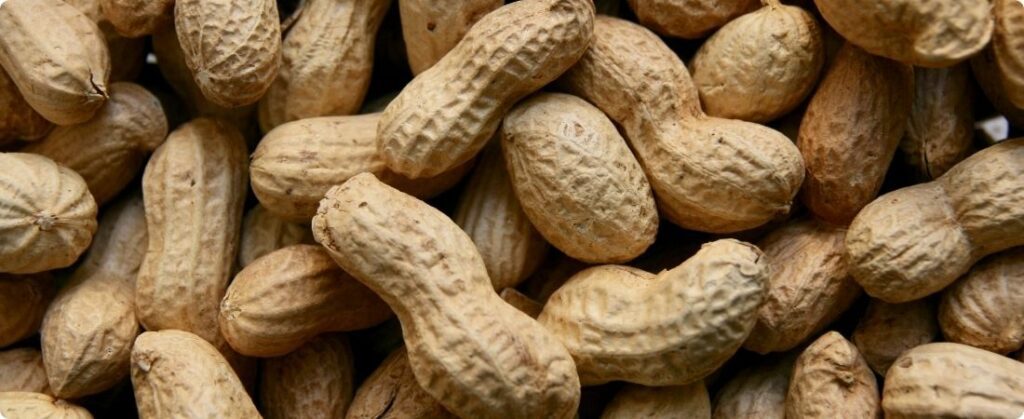
An essential ingredient in the traditional festivals of June and July, peanuts occupy 2,600 hectares in Paraná in the current harvest, being the largest area planted in the last 12 years in the State. The information comes from the Agricultural Situation Bulletin prepared by technicians from the Department of Rural Economy (Deral), the State Secretariat for Agriculture and Supply (Seab), for the week of June 7th to 13th.
In this area, producers from Paraná must harvest 8 thousand tons of peanut, representing around 1% of national production. According to Deral, the main peanut producing region is Paranavaí. The regional nucleus has a share of more than 77% in area and 81% in production in the State.
Analyst Edmar Gervásio explains that, until the 1970s, peanuts produced in Brazil were mainly used to produce refined cooking oil. With the arrival of soybeans, a much cheaper product, peanuts began to be replaced by soybeans to extract the oil, which is today the reference.
Rise of a June classic to Brazilian agricultural strength
As a result, peanuts began to become a niche product, more aimed at confectionery and human consumption in its most diverse forms. At June festivals, it takes on a prominent role, present in paçocas, pé-de-moleque, caramelized, fresh and enriching a multitude of desserts.
From 2014 onwards, an increase in planted area began to be observed in Brazil, on average 11% per year. In the current harvest, Brazil will plant 248.2 thousand hectares, the second largest area since 1976, according to Conab.
National peanut production is expected to total 758 thousand tons in the 2023/24 harvest. The State of São Paulo is the main producer with a share of 80% in total. The second largest producer is Mato Grosso do Sul, with 81.6 thousand tons or 11% of the total.
Corn
The harvest of the second 2023/24 corn crop advanced in Paraná. As of this week, more than 300,000 hectares of the 2.4 million planted have already been harvested. This volume, which is equivalent to 13% of the total area, is one of the highest percentages for the period. Therefore, Deral predicts that Paraná will harvest more than a third of the second corn crop in June, a historic record.
Coffee
The coffee harvest reached 21% in the Paraná coffee park. The weather has been very favorable to the work, with little rain across the entire producing region since May. Uniform maturation also contributes positively to the good evolution of the harvest; however, yields have been slightly disappointing so far. Production is estimated at 41.7 thousand tons, 5% below 2023, but above the 29.2 thousand in 2022 in Paraná.
Litter
Regarding apple production, the Bulletin informs that, currently, a reduction of 20% to that initially projected is estimated in the main producing regions of SC and RS. These regions account, respectively, for 54.7% and 41.6% of national crops. On the other hand, in Paraná, which accounts for 2.8% of harvested volumes, the Palmas fields showed a reduction of 30% from expectations. Therefore, the lower supply due to this drop in production directly impacts the pricing of the fruit.
Beef and pork
The beef price began June on a low, quoted at R$ 216.70, and continues without major variations. Stocks at slaughterhouses are also satisfactory, leaving little room for price negotiation by the producer. According to data from Deral, wholesale prices also remain cold, fluctuating slightly downwards during the first week of the month.
Regarding pork, Deral analyzes data from the IBGE Quarterly Animal Slaughter Survey. In the first quarter of 2024, Paraná increased pork production by 7.5%, when compared to the same period of the previous year, going from approximately 274 to 294 thousand tons.
Refrigerators approved by the Federal Inspection Service – SIF showed growth of 7.8% or 18 thousand tons. Likewise, slaughterhouses approved by the Paraná Inspection Service – SIP showed growth of 5.5% or 2 thousand tons, and slaughterhouses approved by the Municipal Inspection Service – SIM showed growth of 12.4% or 297 tons.
Eggs
On June 6th, IBGE released the results of the Quarterly Egg Production Survey (POG), revealing that the total production of eggs for consumption, including “in natura”, industrialized and for export, reached 892.967 million dozen in the first quarter of 2024. This volume represents an increase of 7.7% compared to the same period in 2023, with an increase of 64.016 million dozens. After all, in the national ranking of egg production for consumption, Paraná occupies eighth place, representing 5.4% of the national total. With regard to the production of eggs for hatching, Paraná led with 62.490 million dozen (30.5% of the national total), followed by São Paulo, with 31.130 million; Goiás, with 29,920; Santa Catarina, with 26,490; and Rio Grande do Sul, with 21.733 million dozens.
Source: Notícias Agrícolas














